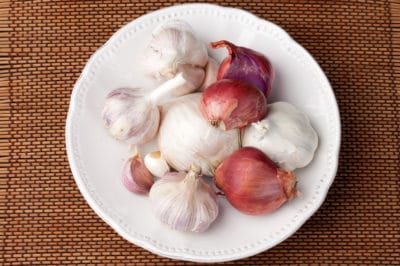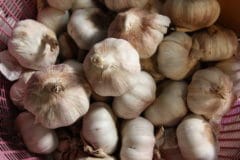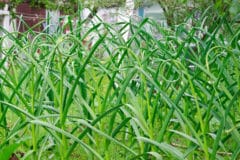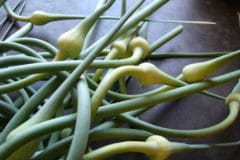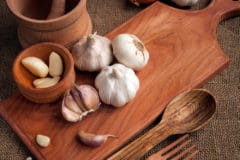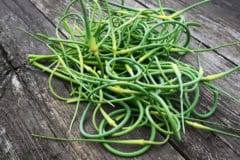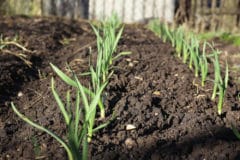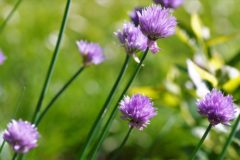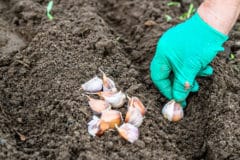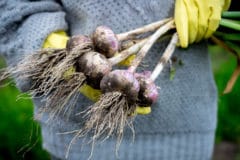Hardneck Garlic
Hardneck garlic gets the name from the stiff central stalk that appears shortly before the plant begins to bulb. If left to grow, this stalk will produce edible immature flower buds (scapes), tiny bulbs called top sets or bulbils, and – sometimes – seeds. The seeds may even be viable. Hardneck produces a few large cloves, but rarely more than 10. Many people feel hardneck garlic has more spicy, complex flavors than softneck garlic.
Softneck Garlic
The common supermarket offering, this type is most often grown commercially. Softneck garlic does not produce a flower stalk. This allows the plant stems to be braided for storage. The flavor is generally less pungent than hardneck garlic; some softnecks are mild enough to eat raw. Softneck garlic may produce up to two dozen medium and small cloves from one bulb.
Climate and Garlic
Hardneck garlic varieties evolved in cold winter areas; not surprisingly, they prefer similar conditions. Hardneck is best planted in fall and is very hardy. In warm climates, you can grow hardneck varieties if you store them in the refrigerator for up to 12 weeks prior to planting. On the other hand, softneck garlic varieties are much more heat tolerant, especially the Creole strains, which originated in Spain.
Good Hardneck Varieties
There are a number of different hardneck groups with distinct characteristics. These include rocambole, porcelain, purple stripe and Asiatic garlic. Among the available varieties are:
- Carpathian – a spicy heirloom garlic from Poland.
- Chesnok Red – gourmet flavor; one of the few that produces seeds.
- Spanish Roja – red tinged hardneck with large bulbs.
- German Extra-Hardy – strong flavor, good for roasting.
Good Softneck Varieties
Like hardnecks, softnecks have two major groups: artichoke (the common supermarket garlic) and silverskin, which is the longest storing type. Available varieties include:
- Siskiyou Purple – good for hot climates.
- Nootka Rose – long-storing.
- Gregory’s China Rose – good for warm-winter areas.
- Silver Rose – excellent for braiding.
Storage Qualities
One of the major differences between hardneck and softneck garlic is their storage qualities. Softnecks store for longer periods. Some softnecks, if properly cured and stored, may last 10 months to a year. Hardnecks rarely store longer than six months. In both cases, garlic should be stored in a warm, dry place with good air circulation. Never put garlic in the refrigerator, as it will develop mold, rot or sprout.
